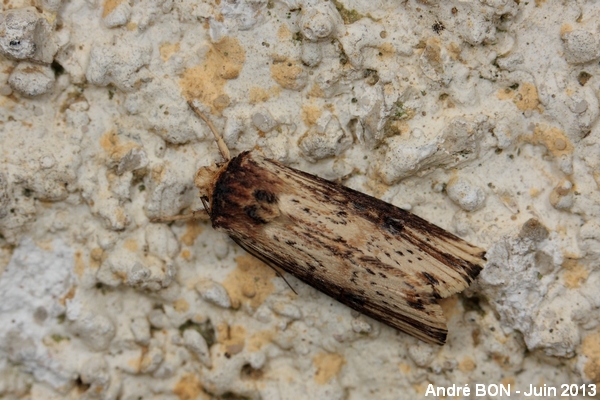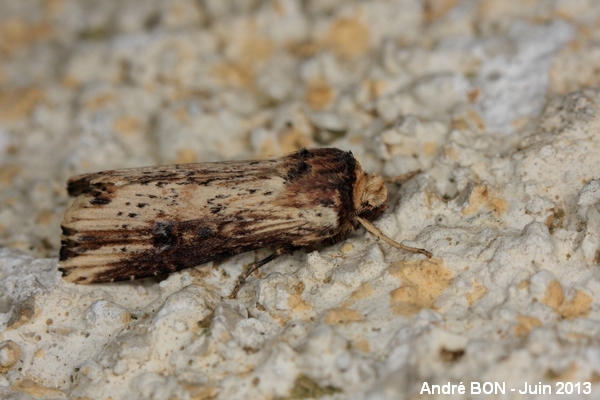

| Flame (Axylia putris (Linnaeus , 1761)) |


|
|
Scientific name: Axylia putris (Linnaeus , 1761) Common name: Flame French name: Noctuelle putride Order: Lepidoptera Suborder: Heterocera Family: Noctuidae Subfamily: Noctuinae Wingspan: 27-36 mm. Biotope: Woodland edges, hedgerows, parks, gardens and other open places. Geographic area: Europe, Asia east to Japan and south to northern India. Flight time: April to September. Number of generations : 1 Caterpillar: Grey or brown with a dorsal hump close to the rear tip on the upper side of the eighth segment. Host plant: Various herbaceous plants including Docks (Rumex), Bedstraws (Galium), Nettles (Urtica), Clovers (Trifolium), etc. |
The Flame is often observed landed with its wings folded around the body then resembling a broken twig. The head is yellowish and the antennae are thread like. The fore wings are a whitish to very pale beige colour. They are striated with reddish brown between the veins. The costal edge is marked with dark brown. This marking is enlarged in the middle and touch the bluish black reniform and orbicular spots. You can also distinguish a small brown marking close to the anal angle and two brown streaks running from the reniform spot to the margin of the wing. The fore wings are crossed by one or two submarginal rows of black dots. There is another row of black dots on the margin. The hind wings are whitish and marked with a dark line on the margin. The Flame over winters as a chrysalis. |
| [To know more about the Flame] [Next picture] [Top] |

|
The colour of the Flame's fore wings and its resting position provide and efficient camouflage when this moth is landed on trunks. This is not so efficient on the roughcast wall of the house. |
| [To know more about the Flame] [Previous picture] [Top] |

|
Side view. |